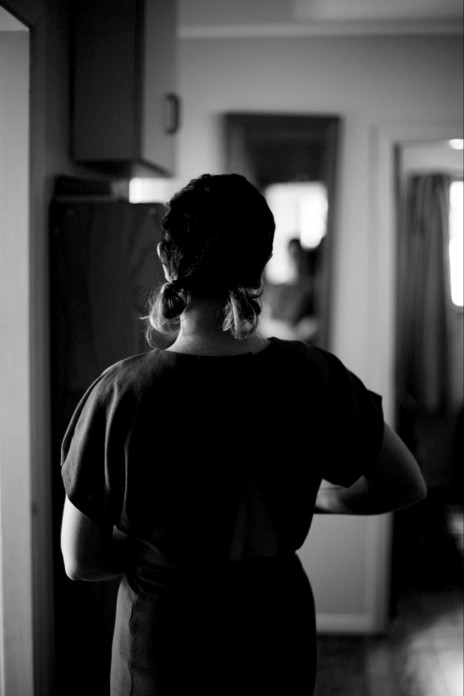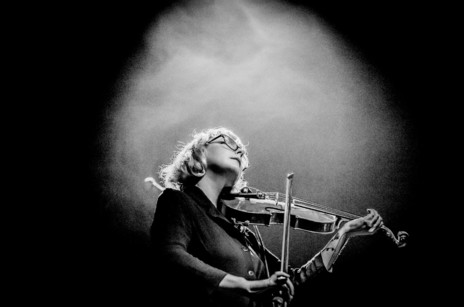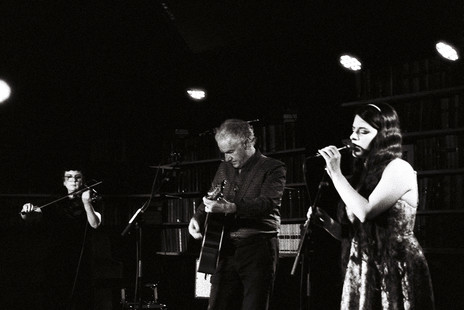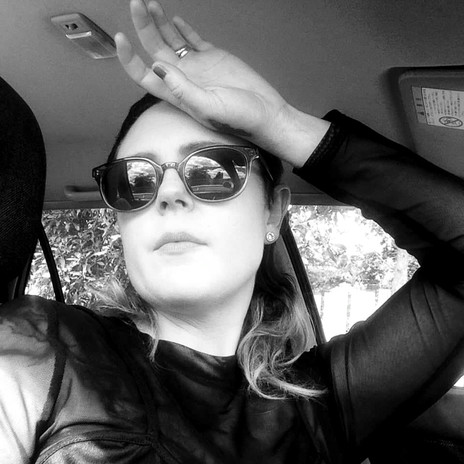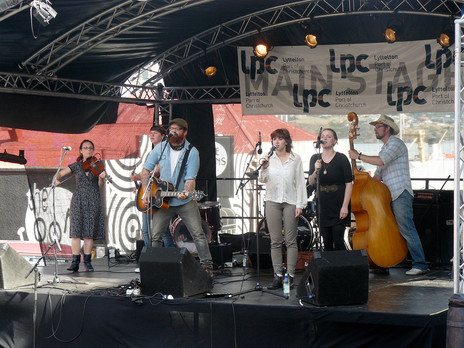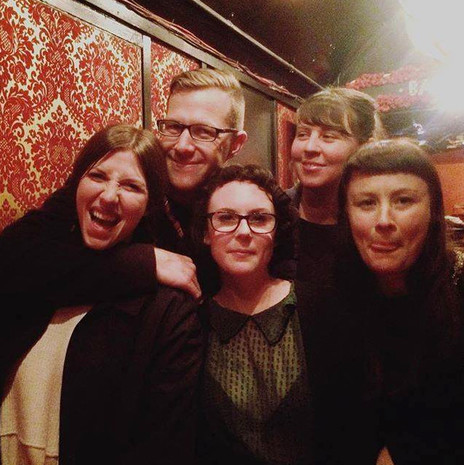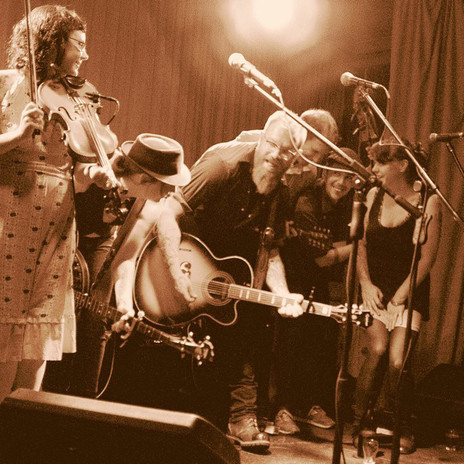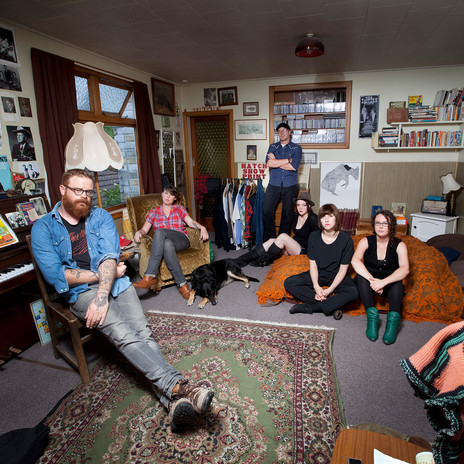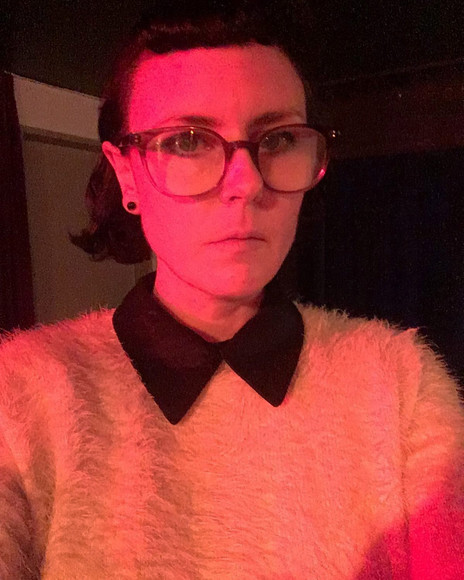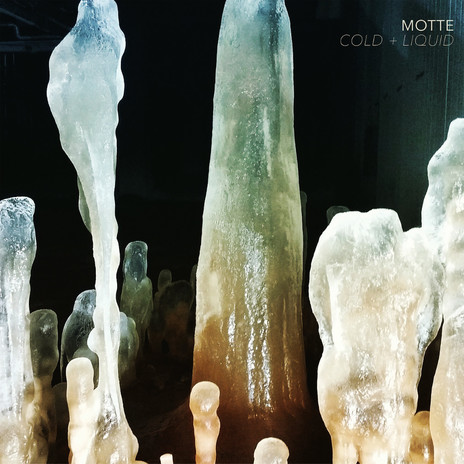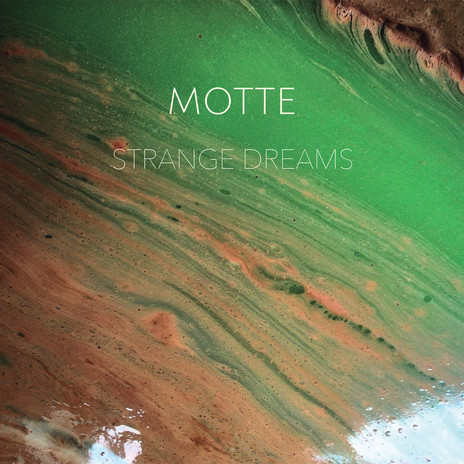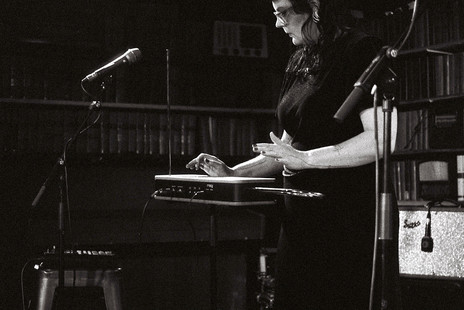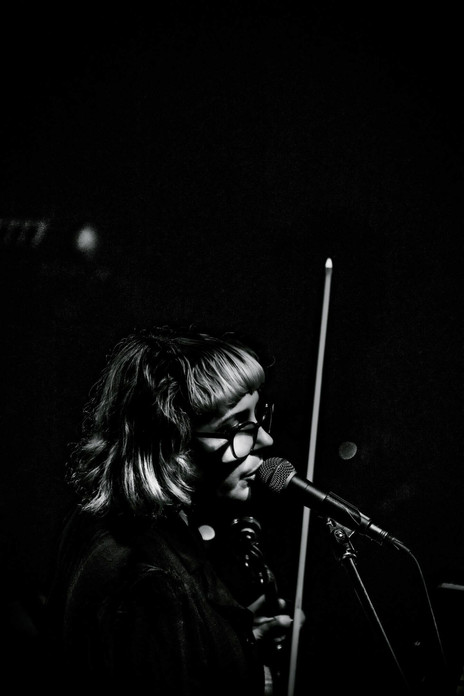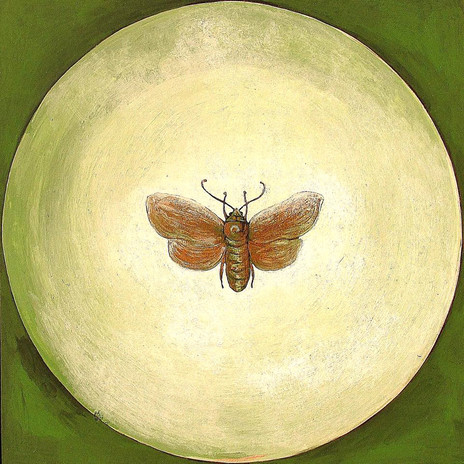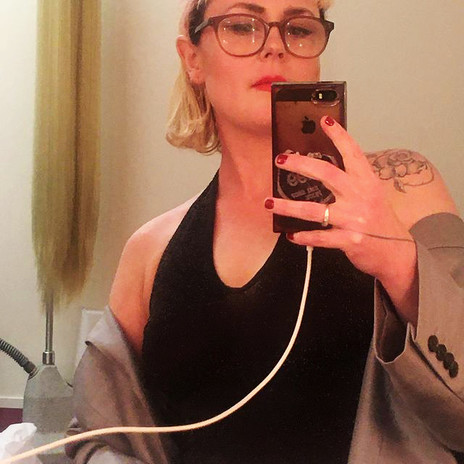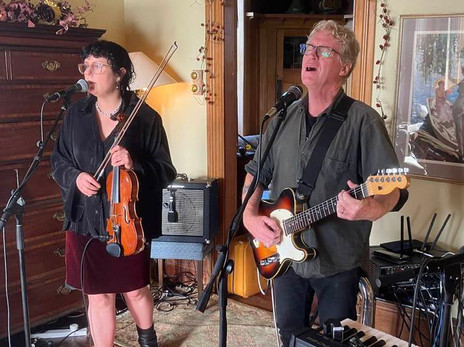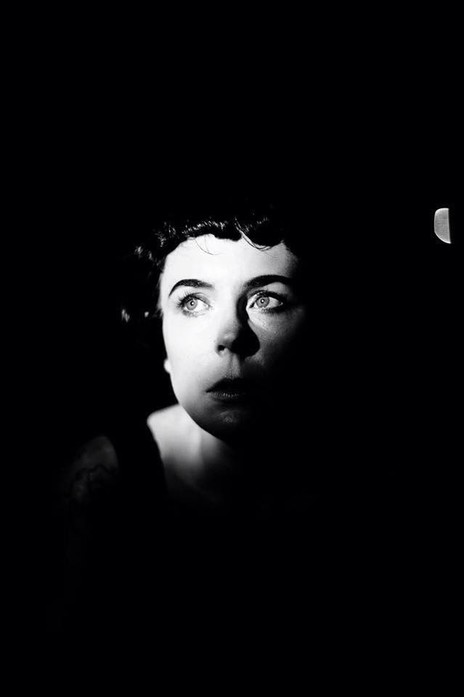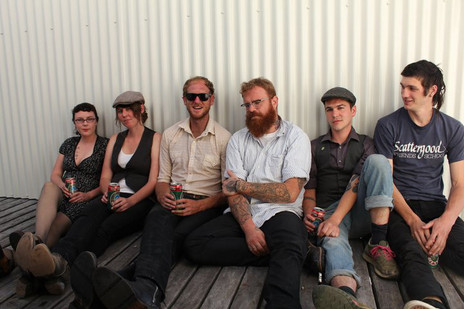Rangiora
Anita was surrounded by music from a young age. “My dad played in a bluegrass band, so I guess I was brought up on folk and bluegrass,” she says. When she was five, Anita saw an older girl playing the violin at primary school. “I was so taken with it that I went home and told my parents I wanted to play.”
Not long after, she started lessons with a local violin teacher, Karen Jackson, beginning a lifelong journey through sound. “When I think about it, there are certain artists or musicians who inspire me, but I never base my music on them,” she reflects. “I think my love of music came before I even really knew what it was.”
Growing up in Rangiora, north of Christchurch, Anita spent her childhood engaged in music, art, and rural escapism. “I spent a lot of time grabbing real-estate pamphlets and circling properties in the country,” she says. “We lived in the township, but I wanted us to move somewhere where we could have horses, dogs, and farm animals. I really loved them. I even took horse riding lessons.”
Although she spent most of her high school years in the music and art departments, she also took up small-bore rifle shooting. “I only got into it because it was the only sports elective that didn’t involve physical exercise,” she explained. “A friend and I became the top competitive rifle shooters in the school.”
Christchurch and Wellington
In 2005, during her final year of high school, she drove into Christchurch twice a week to attend jazz classes at Hagley College. After joining an Irish band, she started playing live music most weekends. In 2006, Anita moved to Wellington to continue studying jazz at Massey University. A few months in, she realised she didn’t even like the type of jazz they were teaching, and dropped out. “I was always more attracted to big orchestrated string arrangements and the 1930s/1940s styles,” she says.
That year, Anita formed the alternative folk duo Raggamuffin Children with her flatmate Brooke Singer. “We went to high school together in Rangiora and then moved up to Wellington at the same time. While I was at Massey, she studied music at Victoria [University], but she lasted the whole year.”
In 2007, Anita and Brooke returned to Canterbury and released their debut album, Werecat Lullabies, through She’ll Be Right Records. Over the next few years, they toured New Zealand’s DIY concert circuit and played shows across Europe with musician Benjamin James, who now runs Herb's Mobile Record Store. Along the way, they opened for Swedish indie-folk singer-songwriter José González in Queenstown. In 2009, Ragamuffin Children released their second album, The Seahorse Emporium, through She’ll Be Right Records.
The Eastern, The Greyhounds, Devilish Mary and the Holy Rollers
While playing with Brooke, Anita joined The Eastern, the longstanding New Zealand country/folk big band led by fellow Cantabrian Adam McGrath. At the time, they were quickly building a reputation as one of the hardest-working groups in the country. “It was a ridiculous time,” says Anita. “It was a proximity thing. I’d moved to Lyttelton. I played the violin. The music was in my wheelhouse of things I was into playing.”
For a spell, The Eastern was all-consuming. “It was great in some ways because we were always playing. We’d play small places, which was a real community-oriented thing.” After four years, however, it all got a bit too much. “I think I was a bit broken at the end,” she admits. “I kind of got a bit stuck, I think.” Amid this, she lived through the 2010 and 2011 Christchurch earthquakes and the thousands of aftershocks that followed.
Alongside The Eastern, Anita formed a bluegrass band called The Greyhounds with Marlon Williams, Ben Woolley (bass), and Hamish Thorpe (mandolin). “It was a really awesome band to play in,” she says. “It wasn’t very well documented, but we have all these unreleased recordings.”
They continued to play together on and off until Marlon moved to Melbourne in 2013, even appearing at a Christchurch City Council event called Dogs Day Out. “It was in this crazy empty warehouse with a sand floor,” Anita recalls. “Hundreds of kids came along and brought their dogs with them.” She pauses momentarily before continuing with a laugh, “Hundreds of kids, hundreds of dogs, and us playing on a stage. It was one of the most surreal experiences.”
To complicate matters further, alongside The Eastern and The Greyhounds, Anita and Ben Woolley (vocals and double bass) formed another band called Devilish Mary and the Holy Rollers with Simon Gregory (guitar). Influenced by mid-20th-century American musical traditions such as swing, doo-wop, exotica, and lounge music, the trio explored these ideas through a cinematic dream-pop lens. “We played together for about ten years,” Anita said. In 2014, they released their self-titled debut album, which NZ Musician writer Eddie Dawn-McCurdy described as “... subtle and melodic and relaxing in a way that is never dull.”
During her years with The Eastern, The Greyhounds, and Devilish Mary and the Holy Rollers, it wasn’t uncommon for Anita to play live music up to five nights a week. “I could make it work, but I was really poor, especially in my early twenties. I survived off playing shows and doing session musician work at the studio.”
The studio Anita refers to is audio engineer and producer Ben Edwards’s Sitting Room Studios in Lyttelton. In the 2010s, Anita’s close association with the Sitting Room led to her playing on breakout recordings by a then-emerging generation of New Zealand country/folk musicians, including Nadia Reid, Marlon Williams, Eb & Sparrow, Tami Neilson and Holly Arrowsmith. When I asked her if she’d felt like she was living the dream then, she said, “I don’t know if I was living the dream, but it was some kind of dream.”
Composition comes calling
Near the end of her time in The Eastern, Anita was approached by Gap Filler, a creative placemaking agency working to revitalise post-earthquake Christchurch by creating art installations and community events in empty spaces throughout the city. “They asked me if I could do live soundtracks for some films from the New Zealand Film Archives that they were thinking about screening,” she says. “That got me thinking about soundtracks.”
Although she’d spent countless days and nights performing music and playing on other people’s records, Anita was still finding her feet as a songwriter and a composer. “I was around a lot of people who were good at songwriting, but I hadn’t really found the confidence to do it myself.” As she began to put together live scores for film screenings, all of that began to change.
Not long after Gap Filler approached her, Anita left Lyttelton and moved into a flat full of musicians in Christchurch. “I was living with Brian Feary [who runs the Melted Ice Cream record label] and [musician] James Sullivan. A lot of bands like BnP and The Dance Asthmatics were practising in our house.”
As a result, she started doing session work and live performances with the wave of more alternative and noisy indie rock acts who were emerging out of Christchurch at the time, including Salad Boys and Ben Woods. “I’ve always been into a lot of different things.” That’s the way life goes. When opportunities come along, you jump on them.”
Strange Bedfellows, Songs For Movies
While she was living with Brian and James, Anita launched the musical solo project she is now best known for, Motte. “It started because my old flatmate from Lyttelton, Lucette Hindin, was running this show out there that she called Strange Bedfellows,” she says. For Strange Bedfellows, Lucette would pick different artists, match them up in groupings, and give them two weeks to prepare a performance. Anita was paired with the local painter and children’s book illustrator Helen Taylor. “She had written a story that had never made its way out into the world,” Anita says. “I said I would make a soundtrack for it and read the story out. That was our performance.”
Back at her flat, James set her up to record with his home studio gear, and she set about creating the music for the performance. “That experience was the basis of what I do now. There’s this specific delay pedal that has really long delay length. He also taught me how to use his Tascam 4-track recording machine.”
At the end of making the music for Strange Bedfellows, Anita had some leftover recording tape. Figuring she should use it up, she started experimenting and recorded a set of semi-improvised pieces. In 2015, those recordings and the Strange Bedfellows music became her first album, Songs For Movies. “Once I had the music ready, I had to find artwork for it. So I painted this picture of a moth, and Motte is German for moth. That’s the whole story.”
From there, she began playing solo gigs in spaces around town like CoCA (Centre of Contemporary Art) and The Physics Room, both contemporary art spaces that were popular in local avant-garde music circles. In the process, Anita found her way into New Zealand’s experimental music scene. “I had to figure out how to play the album live, and it was nerve-wracking,” she admitted. “I remember having to sit down and play on the floor because I felt like I was going to fall over. It was such a crazy feeling, really overwhelming.” Show by show, she began to draw the audience in with her music. When I suggested to her that maybe they were the moths and she was the light, she laughed.
New Dawn, Strange Dreams
By 2016, Anita found herself thinking more about ambient music and modern classical. “I was really into Brian Eno for a bit,” she says. “I listened to a lot of Eno.” That year, she also formed the electronica duo New Dawn with fellow musician Indira Force. Named after an alternative news magazine of the same name, New Dawn’s music drank deeply from the wellsprings of new age, drone music, and dark ambient, culminating in their first and only album, The Dying Light, released in 2017 by the Sonorous Circle music and arts collective.
That same year, Sonorous Circle and the CocoMuse label released Anita’s second Motte album, Strange Dreams, on cassette and vinyl. Recorded by Michael Summerfield and featuring percussion and synths from Indira, Strange Dreams quickly opened new doors for Anita. Writing in the Sunday Star-Times, music reviewer Grant Smithies noted that her fusion of traditional violin phrasing, folk, and gypsy jazz also recalled minimalist classical composition in the mode of Steve Reich. As he put it, “The fact Clark also rolls her glorious thick contralto voice over some pieces is almost a bonus.”
In 2018, Anita fell victim to a viral infection that paralysed her vocal cords for six months. All up, two years passed before she was able to sing again. In the depths of uncertainty, she worked with Thomas Lambert from Sonorous Circle and Ben Edwards from The Sitting Room to record her third album, Cold + Liquid. “I think I just had to do something that gave me a sense of purpose because it was pretty scary,” she said. Although Cold + Liquid was initially an instrumental record, after her vocal cords recovered, she added her voice to the songs.
A breakthrough in touring and composition
Between albums, Anita travelled to Australia several times to play solo Motte shows. She also continued to pick up live and studio session work, playing with the likes of Nadia Reid, Lawrence Arabia, Maryrose Crook of The Renderers, The All-Seeing Hand, The Phoenix Foundation, Luke Buda and Don McGlashan and The Others. “It’s been a natural progression,” she says. “Through session musician work, I started playing more outside folk music.”
During this period, she also started getting asked to compose music for films and contemporary dance performances. In 2016, Georgian filmmaker Melano Sokhadze licensed one of Anita’s Motte tracks for the soundtrack of her film The Birth of Venus. In 2017, Anita performed and produced the soundtrack for Saint Bathans Repetitions by Montreal filmmaker Alexandre Larose. That same year, Melano’s partner Eugene Dyson asked Anita to travel to Sydney and help him compose the music for his own short film, Shadows.
In 2018, the Wellington-based sound artist and curator Emi Pogoni included one of Anita’s compositions in a sound art exhibition called Music From Her at Thistle Hall. “James O’Hara, who is a contemporary dance choreographer, happened to walk in there,” she says. “He listened to my music and contacted me because he was about to start a choreographic series with the Royal New Zealand Ballet. He asked if I would like to write some music for the ballet. That’s how I became involved in composing for dance.”
In 2019, she created the music for James’s work The Sky Is Not So Different From Us (2019) as part of the Choreographic Season of the Royal New Zealand Ballet. The same year, she assisted Malia Johnston, Movement Of The Human, and Eden Mulholland with creative development for Belle, a multimedia performance. She also produced a soundtrack for Spacedome, a contemporary dance/installation created by the Wellington entertainment company COLOSSAL for the HighLight Festival. “I’m involved in heaps of different projects in the New Zealand contemporary dance scene now,” says Anita.
In 2020, Anita was the Wellington experimental music venue The Pyramid Club’s artist-in-residence. That year, in the depths of the pandemic, she composed and produced the soundtracks for several different short films and live performances with Hester Ullyart, Jareen Wee and Jacob Edmonds, and Kyah, respectively, I Am All The Rooms Of The House, Let Fall, and To Cut A Mermaid’s Tongue.
Cold + Liquid
In 2022, Anita released her third album, Cold + Liquid, through Ba Da Bing Records. The road to that release began in 2017 when she met psychedelic folk musician and artist Maryrose Crook (of The Renderers, now based in Joshua Tree, California). “She creates these incredible, surrealist paintings,” says Anita. At the time, Maryrose had come back to New Zealand for an exhibition of her artworks in Lyttelton. “She wanted to do a one-off performance while she was here, and I was asked to join her band.”
After the show, Maryrose helped Anita send her Strange Dreams album to Ben Goldberg from Ba Da Bing Records. As the boss of a New Zealand-loving New York label that had released music by The Dead C, Roy Montgomery, Peter Jefferies, and Tiny Ruins, Ben was interested, but his label already had a full schedule ahead. Regardless, they kept talking, and when Anita sent Ben Cold + Liquid a year later, he agreed to release it through his record label. “There’s a lot of women signed to Ba Da Bing, which is really awesome,” says Anita. “But also, the curation of the artists on the label feels like it runs from folk to noise music, which was perfect for me.”
Built from glacial atmospheres, frozen moods, and isolated impressions, Anita conceptualised Cold + Liquid as an attempt to portray New Zealand through socio-geological soundscapes. In the process, she weaved together field recordings made in Ōamaru Freezing Works, Lyttelton Harbour, and Ōhinetahi Reserve, shortwave/longwave radios, taonga pūoro, her voice, violin, kalimba, and guitar and synths played by Anita and Ben Woods. She told Charlotte Ryan for RNZ’s Music 101 show, “I like to make beautiful music, but I like it to be dark, as well … something that's a bit harder. You have to balance things out, and it needs to be contrasting.”
On release, RNZ music reviewer Tony Stamp described Cold + Liquid as “... a perfect conceptual vehicle for her crystalline tones ... ” while also pointing out that “the innovative violin playing on Cold + Liquid is expressive enough to anchor a whole album.” Similarly, Elsewhere’s Graham Reid noted, “Motte is on a mesmerising journey with Cold + Liquid.”
2023 and beyond
In April 2023, Anita moved from Lyttelton to Auckland. Several months later, she travelled to Canada to perform with Don McGlashan at the Vancouver Folk Festival. Afterwards, she took a trip over to Montreal and New York, where Ben from Ba Da Bing organised a few shows for her. “It was great meeting him,” says Anita. “We discussed a few production ideas for when I feel ready to make another album.”
Later that year, she went on “a really substantial tour” across New Zealand with McGlashan. In the middle of the shows, Anita spent a weekend at Neil Finn’s Roundhead studios recording strings for a documentary the composer Karl Steven was working on. Afterwards, she played around with Neil’s theremin (an early electronic instrument) in the control room. “I just mentioned it to Don, and he said, ‘Excellent, we should add it into the set.’ So three-quarters of the way through the tour, I was borrowing a theremin and playing it.”
Once the tour was over, Anita’s father gave her a theremin, which she promptly proceeded to take on another tour, opening for – and playing strings with – Australian musician and singer-songwriter Mick Harvey (of The Birthday Party and Nick Cave and the Bad Seeds fame) and Mexican singer, filmmaker and visual artist Amanda Acevedo. “One of my biggest skills is being a chameleon,” she says. “When I’m playing with other people like this, my role is generally adding some sort of atmosphere and colour to the music. It’s about enhancing the songs and holding them up.”
Thinking back to her days playing jazz in high school, Anita expressed a sense of genuine awe at everything she’d experienced over the last two decades. “I never thought I’d end up being really into writing soundtracks and producing my own music,” she reflects. “I’m a self-taught producer, and I’ve just gotten better and better at mixing my own music, and mixing for films. It’s so extremely satisfying. I just want to keep growing, keep pushing towards creating soundtracks for film, dance, and movement, and keep playing live.”
